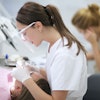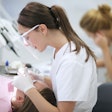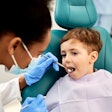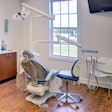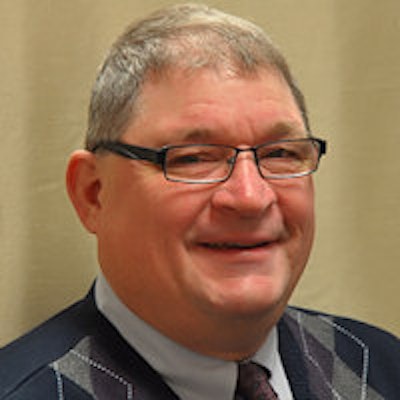
Response to Dr. Thomas Ward's Second Opinion column, "In response to the Pew report on dental therapists"on February 20, 2014.
Dr. Thomas Ward raised some interesting questions about a Pew study that focused on how I've integrated a dental therapist into my private practice. She [the dental therapist] had actually been a dental assistant in my office for a decade and wanted to grow professionally. Given our prior relationship and the need for care in our rural community of 5,300 people, I told her I'd be happy to bring her back into the practice once she completed her dental therapy education. I'm glad that I did.
As with any report, the Pew study did not include every detail, so I want to offer some additional information to help answer Dr. Ward's questions. Before that, though, I'd like to explain what I see in my community and why my decision made financial sense.
 John T. Powers, DDS.
John T. Powers, DDS.I think we all know that there are a lot of folks who, for whatever reason, have not been able to get regular care -- an untapped base of patients that most private practice dentists have not been able to find a financially viable way to serve. Some of my Medicaid patients travel more than two hours to get to my office. Some also say they used to spend twice that time traveling to get care before I expanded my practice's Medicaid patient load by hiring a dental therapist.
I also teach one day a week at the Rice Regional Dental Clinic, about 45 minutes away in a town of nearly 20,000 people, where I train future dentists and dental therapists from the University of Minnesota. The clinic serves a large number of Medicaid patients. When it opens its phone lines to take new Medicaid appointments, it usually doesn't take more than 15 minutes to fill up the entire upcoming month.
The Minnesota law allowing dentists to hire dental therapists requires that 50% of their patients be from underserved populations. In 2012, 62% of the patients my dental therapist served were on Medicaid. As noted in the Pew report, my practice overall increased its share of Medicaid patients from 26% to 39% in the year after I hired a dental therapist. In 2011, the year before I hired her, 273 out of 1,108 patients my practice served were on Medicaid. In 2012, the number increased to 507 out of 1,291. That's a 50% increase.
What are we doing for these new patients? That's the crux of what Dr. Ward asks. We provide both preventive and restorative care depending on what I see when I look in their mouths. We have two full-time hygienists that do prophies for children and adults. The dental therapist spends most of her time performing restorations. In 2012, 80% (768) of the 972 procedures she performed were restorations. Overall, the percentage of restorations we completed practice-wide increased by 23% in her first year.
Dr. Ward also asks why my "gross" only went up $114,000 when I was able to conduct more advanced procedures in my dental therapist's first year. These increases were indeed significant: 55 more root canals, 12 more implant procedures, 110 more surgical extractions, and 88 more removable prosthodontic procedures. I also did more than 500 patient exams.
My practice actually increased billings nearly $295,000 between 2011 and 2012. Yet with 39% of my patients on Medicaid and one of the lowest reimbursement rates in the country (paying only 41% of my charges), the increase in collections went up less than billings. A number of these "big ticket" procedures were for Medicaid patients (though not implants, as they are not covered by Medicaid). As you can guess, we received a higher level of reimbursement for advanced procedures from non-Medicaid patients.
There will always be more details that can be analyzed, but I've seen a lot of families in my community get turned around in terms of their oral health because we've been able to find a way to care for them. While I know that many of my colleagues are not familiar with dental therapists because their states prohibit them from hiring such practitioners, I hope this will help those seeking to learn more. I invite Dr. Ward and other colleagues to visit my practice in Montevideo, MN. Fair warning, though, you'll need to rent a car -- we're about two hours from the nearest airport.
John T. Powers, DDS, is the owner and sole dentist at Main Street Dental Care in Montevideo, MN.
The comments and observations expressed herein do not necessarily reflect the opinions of DrBicuspid.com, nor should they be construed as an endorsement or admonishment of any particular idea, vendor, or organization.
